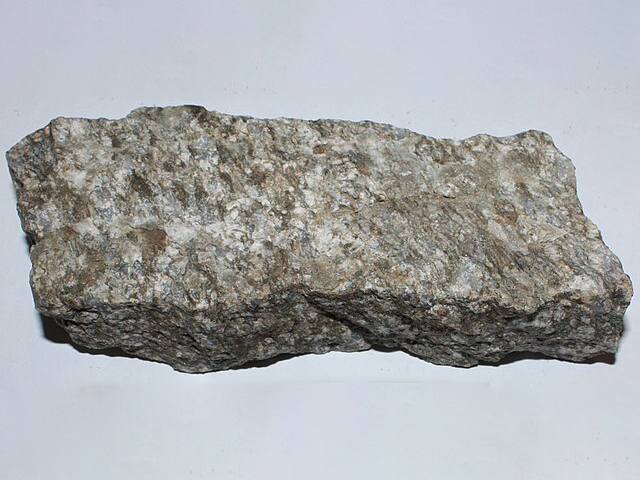
Granite ranks 6-7 on the Mohs hardness scale, making it one of the toughest natural stones to crush. This exceptional hardness requires stone crushers to generate extremely high compressive forces, typically through specially designed jaw plates or cone mantles that concentrate mechanical stress.
The quartz content in granite, often exceeding 20%, acts as an abrasive during crushing operations. This mineral composition accelerates wear on crusher components like manganese steel liners, reducing their operational lifespan by 30-40% compared to processing softer materials.
Granite's polycrystalline structure causes irregular fracture patterns during size reduction. Unlike homogeneous materials, its interlocking feldspar and quartz crystals tend to produce flaky or elongated particles, requiring crushers with precise chamber designs and multiple crushing stages to achieve cubical end products.
Tiered Crushing Equipment Configuration
For primary crushing, the HD Jaw Crusher stands out with its reinforced frame structure that delivers exceptional durability under heavy load conditions. This robust design ensures efficient breaking of large raw materials into manageable sizes.
The Gyratory Cone Crusher serves as the optimal choice for secondary crushing, utilizing its unique layered compression principle where rocks are crushed between a gyrating spindle and concave liners. This mechanism produces more uniform particle shapes compared to other methods.
When finer output is required, the Multi-cylinder Hydraulic Cone Crusher provides precise control over final product size through its advanced hydraulic adjustment system. Multiple cylinders working in coordination enable stable operation and consistent particle size distribution.
Anti-Wear System Design
The stone crusher employs advanced wear-resistant materials like ZGMn13-4 high-manganese steel liners, which undergo specialized heat treatment to achieve exceptional hardness and impact absorption. This creates a durable surface that withstands constant abrasion from rocks while maintaining structural integrity.
A fully hydraulic overload protection system automatically detects and discharges uncrushable materials like tramp metal. When excessive force is detected, hydraulic cylinders instantly widen the crushing cavity to release foreign objects, preventing mechanical damage without requiring manual intervention.
Precision-engineered automatic lubrication systems deliver optimized oil flow to critical bearing points through strategically designed channels. This ensures continuous protection against friction while minimizing grease consumption and maintenance downtime.
Typical Production Cases
Stone crushers play a vital role in producing railway ballast, where strict size control between 45-70mm is required for optimal track stability and drainage. The machines precisely crush quarried rocks to meet these specifications.
For manufactured sand production, vertical shaft impact crushers are commonly employed to create fine aggregates in the 0-5mm range. This process transforms coarse materials into uniformly shaped particles suitable for construction applications.
In sustainable material processing, specialized crushing lines handle granite slab waste from stone workshops. These systems efficiently break down leftover materials into reusable aggregates, demonstrating the equipment's recycling capabilities in stone production industries.
Power Consumption Comparison for Granite Crushing
| Crusher Type | Feed Size (mm) | Output Size (mm) | Power Consumption (kWh/ton) |
|---|---|---|---|
| Jaw Crusher | 150-300 | 20-60 | 0.8-1.2 |
| Cone Crusher | 60-150 | 5-30 | 1.0-1.5 |
| Impact Crusher | 50-100 | 5-20 | 1.2-1.8 |
| Hammer Crusher | 50-80 | 3-10 | 1.5-2.0 |
Crushing Process Differences Between Granite and Basalt
Granite and basalt require different crushing approaches due to their distinct geological properties. Granite, being an igneous rock with coarse crystalline structure, typically fractures along grain boundaries under compression. Jaw crushers and cone crushers work effectively for granite, producing cubical particles ideal for construction aggregates.
Basalt presents greater challenges with its fine-grained, dense volcanic composition. Its higher abrasiveness wears crusher components faster, making impact crushers with reinforced rotors more suitable than standard compression crushers. The fibrous nature of some basalt varieties also requires specialized crushing chambers to prevent material packing.
Modern plants often use multi-stage crushing systems for basalt, combining initial jaw crushing with secondary cone or impact crushing stages. This sequential approach achieves the desired particle shape while minimizing equipment wear. Temperature management becomes crucial when processing basalt at high throughput rates, as its low thermal conductivity can lead to heat buildup in crusher bearings.